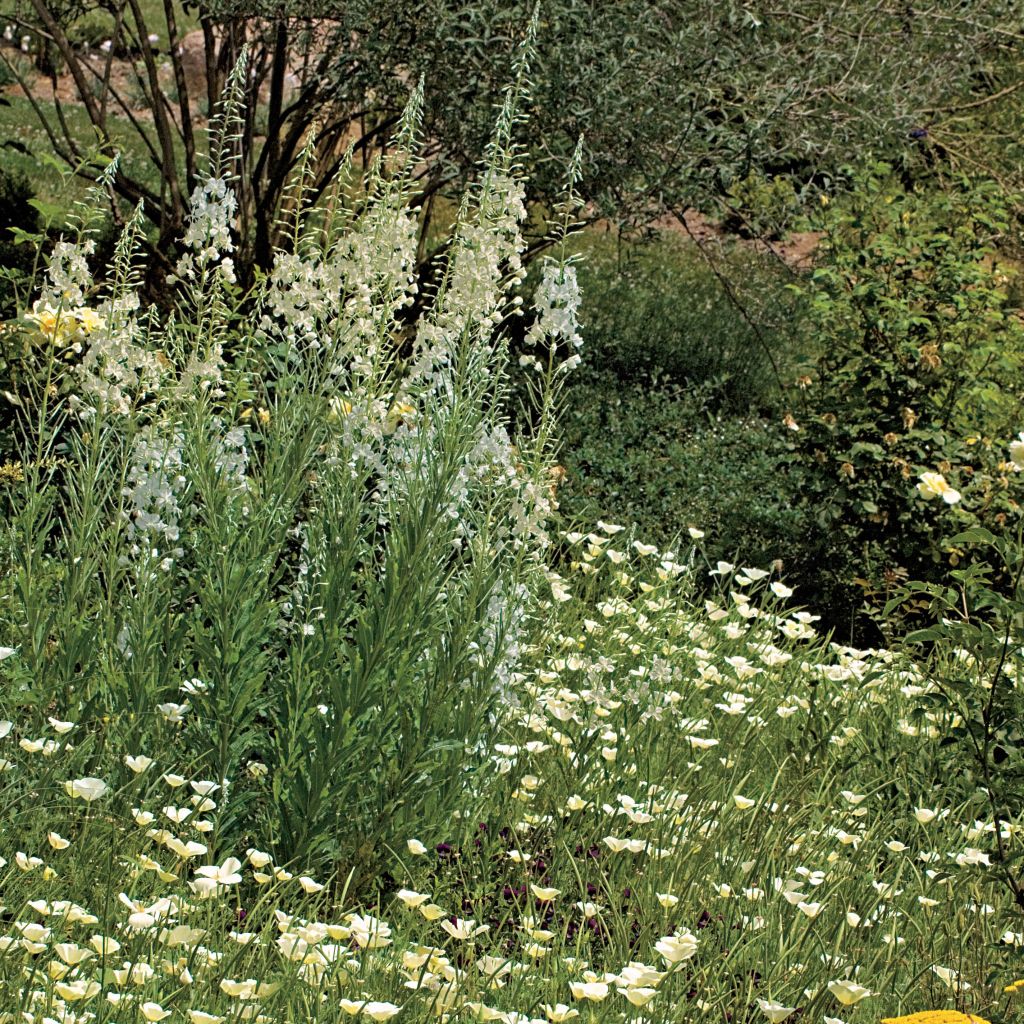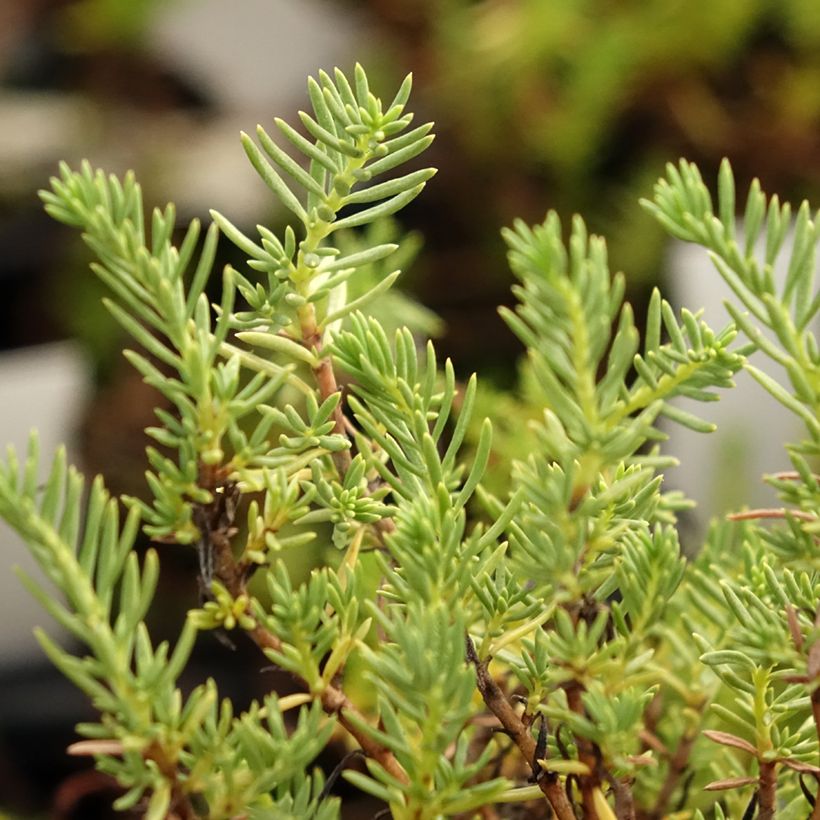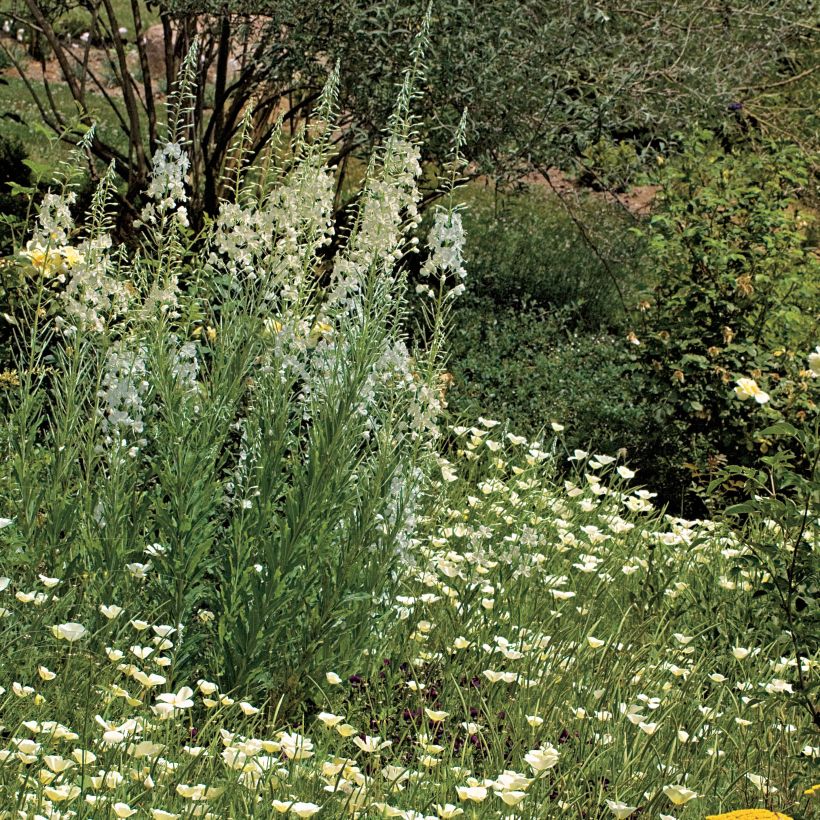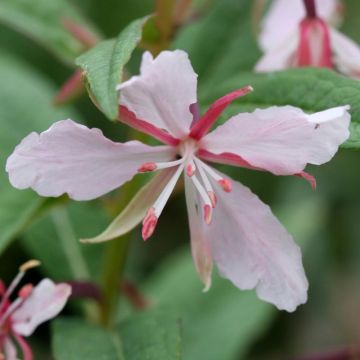

Epilobium angustifolium Album


Epilobium angustifolium Album


Epilobium angustifolium Album


Epilobium angustifolium Album


Epilobium angustifolium Album
Epilobium angustifolium Album
Epilobium angustifolium Album
Fireweed, Rosebay Willowherb
Beautiful plant, bloomed abundantly but did not come back the following year. Completely disappeared. Surprising for a perennial, which is supposed to come back every year.
Patrick, 23/11/2023
Special offer!
Receive a €20 voucher for any order over €90 (excluding delivery costs, credit notes, and plastic-free options)!
1- Add your favorite plants to your cart.
2- Once you have reached €90, confirm your order (you can even choose the delivery date!).
3- As soon as your order is shipped, you will receive an email containing your voucher code, valid for 3 months (90 days).
Your voucher is unique and can only be used once, for any order with a minimum value of €20, excluding delivery costs.
Can be combined with other current offers, non-divisible and non-refundable.
Home or relay delivery (depending on size and destination)
Schedule delivery date,
and select date in basket
This plant carries a 12 months recovery warranty
More information
We guarantee the quality of our plants for a full growing cycle, and will replace at our expense any plant that fails to recover under normal climatic and planting conditions.
Would this plant suit my garden?
Set up your Plantfit profile →
Description
Simplicity is always a sign of elegance. The White Willowherb or Epilobium angustifolium 'Album' is proof of that. Its slender silhouette allows it to stand out and find a place in the background, swaying in the wind, and its beautiful clusters of white flowers diffuse a fresh and soothing light that is suitable for natural and zen atmospheres. This hardy perennial is not demanding. It requires a rather moist and rich soil, a sunny or partially shaded exposure, and no maintenance. It will attract pollinators from July to September.
Less common than the Pink Willowherb, Epilobium angustifolium 'Album', which also belongs to the evening primrose family, is a hardy perennial that can be found along mountain paths. It spontaneously and rapidly colonizes clearings thanks to its numerous seeds that spread around. Less invasive than its pink cousin, however, it will allow you to fill a wild space in your garden. It appreciates moist soils, but not waterlogged in winter, rather rich, neutral to acidic. It likes the sun, but also adapts to partial shade, instantly brightening it up.
In spring, it quickly deploys tall, flexible, yet sturdy stems that easily reach a height of 1.5m (5ft). They bear long deciduous leaves. Alternate, lanceolate, and with a prominent central vein, they are a beautiful vibrant green that highlights the whiteness of the flowers. These flowers appear successively on the upper third of the stem, forming long, slightly pyramidal clusters. Consisting of four petals, they measure a maximum of 2cm (1in) and also attract insects throughout the summer.
The shades of the White Willowherb are essential in a large white bed. Its stature gives it a place in the back or centre of the bed. In front of the plant, you can plant Phlox, Masterworts, Dame's Rocket, and perennial Geraniums. A few touches of green, provided by Boxwood, Lonicera nitida 'Elegant', or Fennel will complete the ensemble. For a more natural and wild space, choose from 'Fallow and wildflower meadows' and sow at the foot of the Willowherbs. Guaranteed effect and tranquility for a flowery summer.
Epilobium angustifolium Album in pictures






Flowering
Foliage
Plant habit
Botanical data
Epilobium
angustifolium
Album
Onagraceae
Fireweed, Rosebay Willowherb
Cultivar or hybrid
Other Epilobium - Willowherb
View all →Planting and care
The Epilobium angustifolium 'Album' prefers moist soils and sunny or slightly shaded positions. Like all Alpines, it fears excessive humidity in winter. Hardy, it is not afraid of the cold and adapts to many soil types.
It easily self-sows and tends to colonize the garden: ideal for dressing up a neglected corner. Or offering young spring shoots to neighbors! To prevent self-seeding, remove faded flowers. This will extend the flowering period until October.
Planting period
Intended location
Care
Planting & care advice
-
, onOrder confirmed
Reply from on Promesse de fleurs
Similar products
Haven't found what you were looking for?
Hardiness is the lowest winter temperature a plant can endure without suffering serious damage or even dying. However, hardiness is affected by location (a sheltered area, such as a patio), protection (winter cover) and soil type (hardiness is improved by well-drained soil).

Photo Sharing Terms & Conditions
In order to encourage gardeners to interact and share their experiences, Promesse de fleurs offers various media enabling content to be uploaded onto its Site - in particular via the ‘Photo sharing’ module.
The User agrees to refrain from:
- Posting any content that is illegal, prejudicial, insulting, racist, inciteful to hatred, revisionist, contrary to public decency, that infringes on privacy or on the privacy rights of third parties, in particular the publicity rights of persons and goods, intellectual property rights, or the right to privacy.
- Submitting content on behalf of a third party;
- Impersonate the identity of a third party and/or publish any personal information about a third party;
In general, the User undertakes to refrain from any unethical behaviour.
All Content (in particular text, comments, files, images, photos, videos, creative works, etc.), which may be subject to property or intellectual property rights, image or other private rights, shall remain the property of the User, subject to the limited rights granted by the terms of the licence granted by Promesse de fleurs as stated below. Users are at liberty to publish or not to publish such Content on the Site, notably via the ‘Photo Sharing’ facility, and accept that this Content shall be made public and freely accessible, notably on the Internet.
Users further acknowledge, undertake to have ,and guarantee that they hold all necessary rights and permissions to publish such material on the Site, in particular with regard to the legislation in force pertaining to any privacy, property, intellectual property, image, or contractual rights, or rights of any other nature. By publishing such Content on the Site, Users acknowledge accepting full liability as publishers of the Content within the meaning of the law, and grant Promesse de fleurs, free of charge, an inclusive, worldwide licence for the said Content for the entire duration of its publication, including all reproduction, representation, up/downloading, displaying, performing, transmission, and storage rights.
Users also grant permission for their name to be linked to the Content and accept that this link may not always be made available.
By engaging in posting material, Users consent to their Content becoming automatically accessible on the Internet, in particular on other sites and/or blogs and/or web pages of the Promesse de fleurs site, including in particular social pages and the Promesse de fleurs catalogue.
Users may secure the removal of entrusted content free of charge by issuing a simple request via our contact form.
The flowering period indicated on our website applies to countries and regions located in USDA zone 8 (France, the United Kingdom, Ireland, the Netherlands, etc.)
It will vary according to where you live:
- In zones 9 to 10 (Italy, Spain, Greece, etc.), flowering will occur about 2 to 4 weeks earlier.
- In zones 6 to 7 (Germany, Poland, Slovenia, and lower mountainous regions), flowering will be delayed by 2 to 3 weeks.
- In zone 5 (Central Europe, Scandinavia), blooming will be delayed by 3 to 5 weeks.
In temperate climates, pruning of spring-flowering shrubs (forsythia, spireas, etc.) should be done just after flowering.
Pruning of summer-flowering shrubs (Indian Lilac, Perovskia, etc.) can be done in winter or spring.
In cold regions as well as with frost-sensitive plants, avoid pruning too early when severe frosts may still occur.
The planting period indicated on our website applies to countries and regions located in USDA zone 8 (France, United Kingdom, Ireland, Netherlands).
It will vary according to where you live:
- In Mediterranean zones (Marseille, Madrid, Milan, etc.), autumn and winter are the best planting periods.
- In continental zones (Strasbourg, Munich, Vienna, etc.), delay planting by 2 to 3 weeks in spring and bring it forward by 2 to 4 weeks in autumn.
- In mountainous regions (the Alps, Pyrenees, Carpathians, etc.), it is best to plant in late spring (May-June) or late summer (August-September).
The harvesting period indicated on our website applies to countries and regions in USDA zone 8 (France, England, Ireland, the Netherlands).
In colder areas (Scandinavia, Poland, Austria...) fruit and vegetable harvests are likely to be delayed by 3-4 weeks.
In warmer areas (Italy, Spain, Greece, etc.), harvesting will probably take place earlier, depending on weather conditions.
The sowing periods indicated on our website apply to countries and regions within USDA Zone 8 (France, UK, Ireland, Netherlands).
In colder areas (Scandinavia, Poland, Austria...), delay any outdoor sowing by 3-4 weeks, or sow under glass.
In warmer climes (Italy, Spain, Greece, etc.), bring outdoor sowing forward by a few weeks.



















































